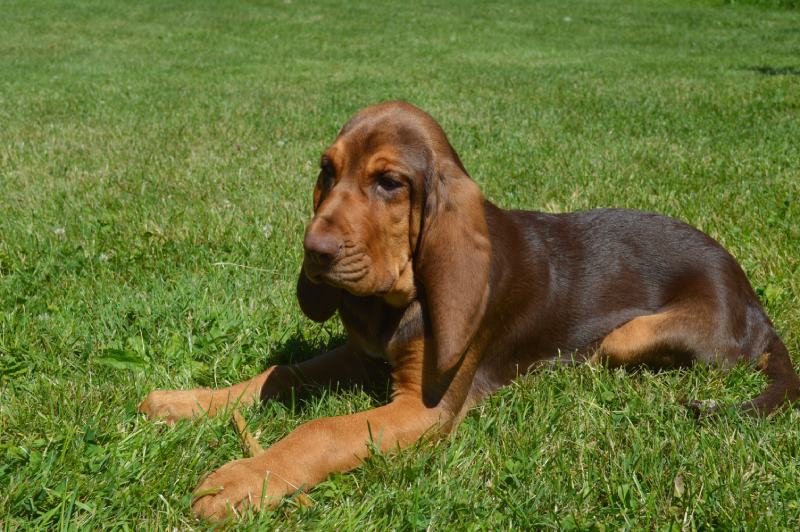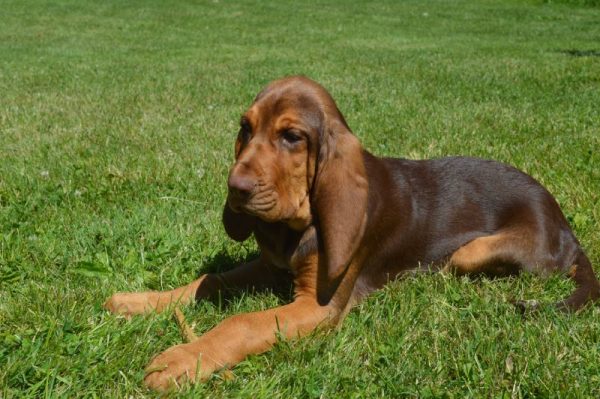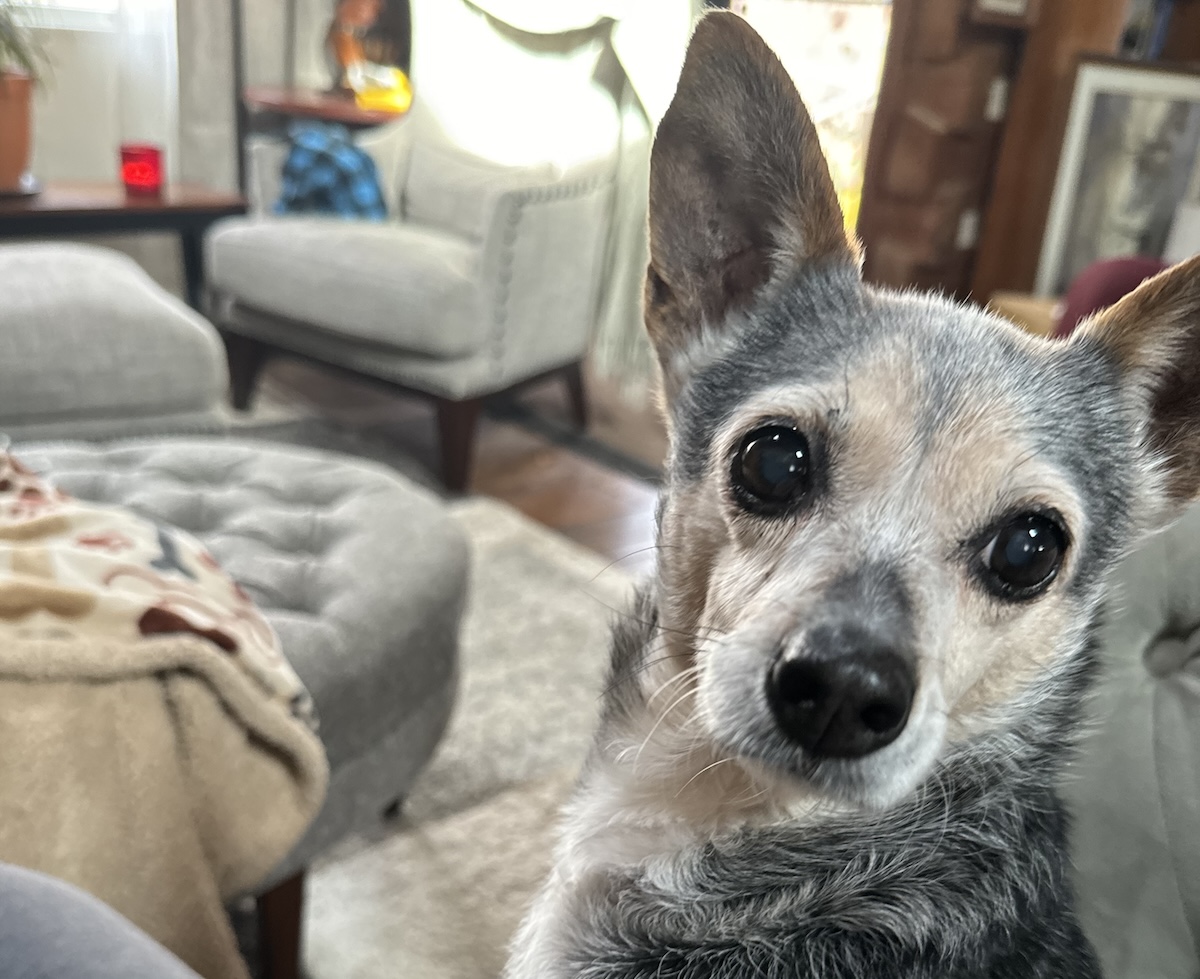Bloodhounds are known as moderate shedders. That means that while they do shed, Bloodhounds don’t shed quite as much as some other breeds. Their short, dense fur doesn’t make a very significant mess, either.
Dogs can vary in the amount they shed depending on genetics, health, and diet. Some dogs may simply shed more than others, while some may shed less when fed a higher-quality diet. It all depends on the dog. You should be prepared for at least some regular shedding, but this is often pretty manageable with proper care.
Are Bloodhounds Hypoallergenic?
Hypoallergenic dog breeds are often sought after by individuals who have allergies to pet dander. These breeds are believed to produce fewer allergens and therefore cause fewer allergic reactions in sensitive individuals. However, it’s important to clarify that there is no truly hypoallergenic dog breed. Science has never proven that hypoallergenic dogs exist. In fact, it has proven the opposite1.
Of course, this would include the Bloodhound. These dogs do shed, though not heavily like some other breeds. However, they will still produce allergens, just like any other dog breed.
There are a few reasons why no dogs are hypoallergenic, including Bloodhounds. Most importantly, all dogs produce dander, which comes from the skin. It’s these particles that cause allergic reactions—not hair. Allergens can also be found in a dog’s saliva and urine. When a dog grooms itself, allergens can be spread to its fur and skin. When a dog urinates, these allergens can be left behind in the environment.
Dog allergies do vary from person to person. Dogs produce many types of proteins that can be allergens, and most people aren’t allergic to all of these proteins. For instance, a particular kind of protein (called Can f 5) is only produced by intact male dogs. If you are allergic to this allergen only, you could safely have a female or neutered dog without allergen symptoms.
While science has discovered that some cat breeds produce lower levels of allergens than others, it hasn’t found the same for dogs.
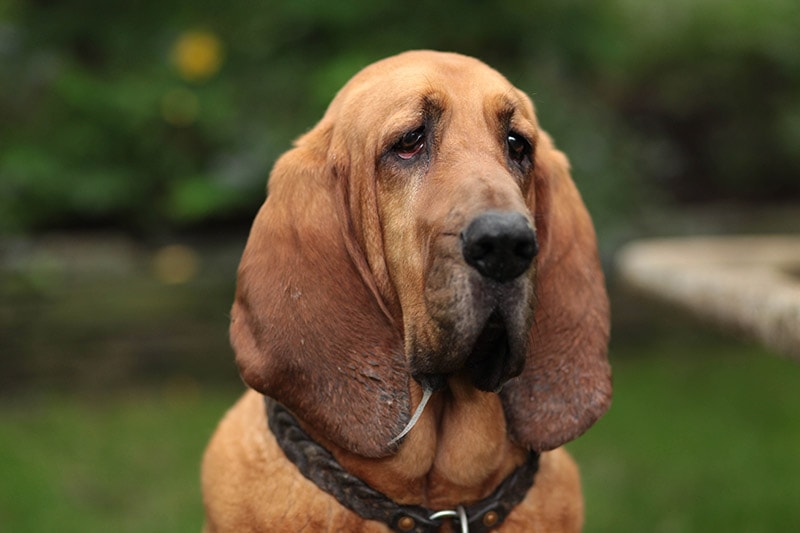
Why Is My Bloodhound Shedding So Much?
Excessive shedding in dogs, including Bloodhounds, can be caused by a variety of factors. It’s important to understand that some level of shedding is normal for all Bloodhounds, but if you notice a sudden or significant increase in shedding, there might be underlying reasons to consider.
Most Bloodhounds will shed seasonally. Usually, in the fall and spring, when the weather changes, the Bloodhound will shed more as they “change” their coat. This excessive shedding is actually driven by hormones—not the weather. Therefore, even dogs in more tropical climates may still shed seasonally.
Dogs with poor nutrition may also shed more. If the canine isn’t getting the necessary nutrients for their skin and coat, then their body may be unable to keep them healthy. Dry, brittle fur is sometimes a sign of nutritional problems. Some dogs may need more nutrients than others, especially if they are pregnant or have an underlying problem. Allergies may also cause excessive shedding. Often, canine allergies lead to skin issues and irritation. Your dog may seem itchier than usual, and excessive itchiness may lead to fur loss. Patches of baldness are even common in extreme cases.
Several medical conditions can lead to excessive shedding, too. Thyroid problems, hormonal imbalances, and skin infections can all cause excessive fur loss. You’ll typically need to consult with a vet about these medical conditions, especially if your dog is showing other symptoms. Stress and anxiety can manifest in different ways, and excessive shedding might also be one of them. Major changes in the environment, routine, or other stressors can trigger this response. Usually, Bloodhounds are pretty laid back, so this isn’t as much of a problem. However, all dogs are individuals, and some may be more high-strung than others.
Over-grooming or harsh grooming tools can damage the fur and cause it to fall out, leading to increased shedding. If you’re grooming your dog but have not actually noticed a decrease in shedding, it may be that you’re unknowingly damaging your dog’s fur. Be sure to research the tools you’re using or ask a professional groomer about your potential options.
Sometimes, dogs can shed more with hormone shifts, as well. For instance, dogs may shed more when they hit puberty, or female dogs may shed more when they are in heat. Getting the dog spayed or neutered can help prevent these hormones from causing excessive shedding.
Are Bloodhounds Low Maintenance?
While they are friendly and laid back, Bloodhounds do have specific care needs that must be met.
Bloodhounds have a short, dense coat that sheds regularly. While their coat is not as prone to matting as longer-haired breeds, they do shed, especially during shedding seasons. Regular brushing can help manage shedding and keep their coat healthy. Additionally, their floppy ears need special attention to prevent infections and keep them clean.
These dogs aren’t the most active breed out there, but they still require regular exercise to stay happy and healthy. Daily walks and playtime are especially important to promote mental stimulation and prevent weight gain. If you think your dog is overweight, be sure to discuss possible fixes with your vet and potentially increase their exercise.
Training Bloodhounds isn’t the easiest. They can be exceptionally stubborn and independent, which often makes them not respond well to training. They have a strong sense of smell that can make them easily distracted. They will follow their nose, even if you’re telling them not to.
Bloodhounds are typically friendly and good-natured dogs, but early and ongoing socialization is important to ensure they get along well with other dogs and people.
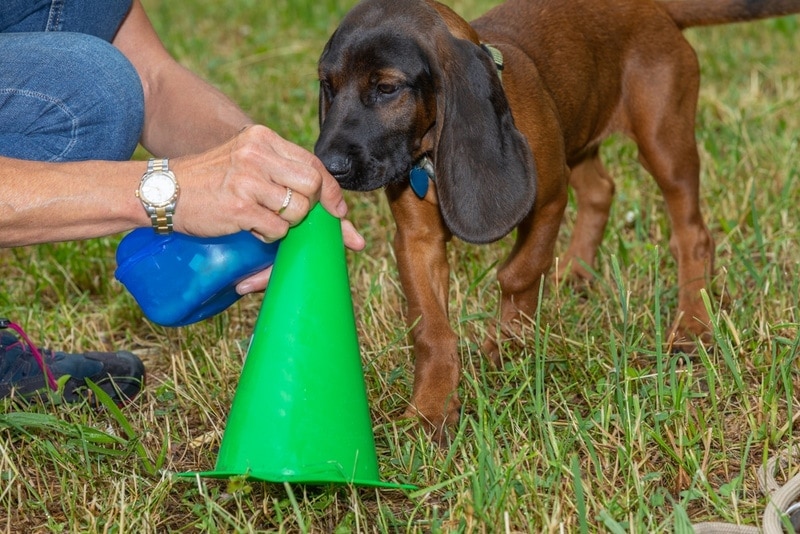
Final Thoughts
Bloodhounds are considered moderate shedders. That means they’re somewhere in the middle of all dog breeds when it comes to the amount they shed. They don’t shed profusely, but you should expect a bit of loose fur.
Their short, dense coat requires regular grooming to manage shedding and maintain skin and coat health. Brushing their coat weekly can help remove loose hair and minimize the amount of fur left around the home.
If you’re considering bringing a Bloodhound into your home, it’s essential to be prepared for the grooming and care requirements associated with their shedding. These dogs can shed quite profusely on some occasions, but it is often pretty manageable.
Featured Image Credit: Shy-Guy, Shutterstock

